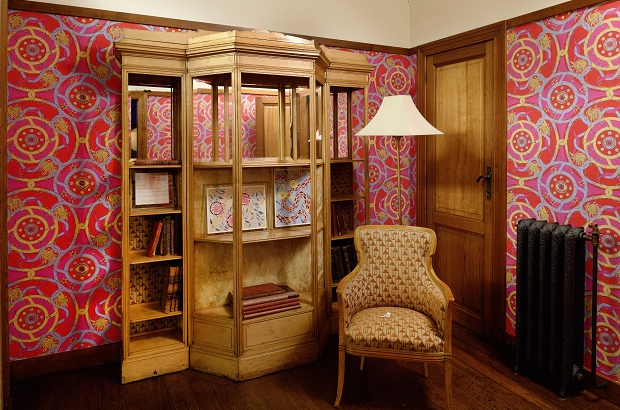- Daily & Weekly newsletters
- Buy & download The Bulletin
- Comment on our articles
Pushing back the walls: Five artists redecorate the Horta Museum
The Horta Museum – Brussels’ temple to Art Nouveau – offers a fresh perspective to the architectural movement with five artists transforming four rooms of the architect’s former home with unique wallpapers of their own design.
On display until 14 November, the exhibition Pushing back the walls is one of the highlights of Brussels Design September. It’s a first for the Saint-Gilles museum, an experimental initiative that not only echoes a show dedicated to Art Nouveau ornaments in 2020, but is boldly innovative.
The selected artists - from Belgium and Europe - were each given carte blanche to create their own designs in four rooms not previously papered. The only conditions for the commission were that they respect the values of the artistic movement and the building, and that they use French wallpaper company Atelier d’Offard, which specialises in traditional print techniques.
Their pop-up installations are a continuation of the sublime decor that characterises the museum's interior, while resolutely infusing and revitalising it with a contemporary vision, thereby reinforcing one of Art Nouveau’s guiding principles of reflecting the outside world.
Although the unique wallpapers are a temporary installation, the museum shop is selling various items bearing the colourful one-off designs.
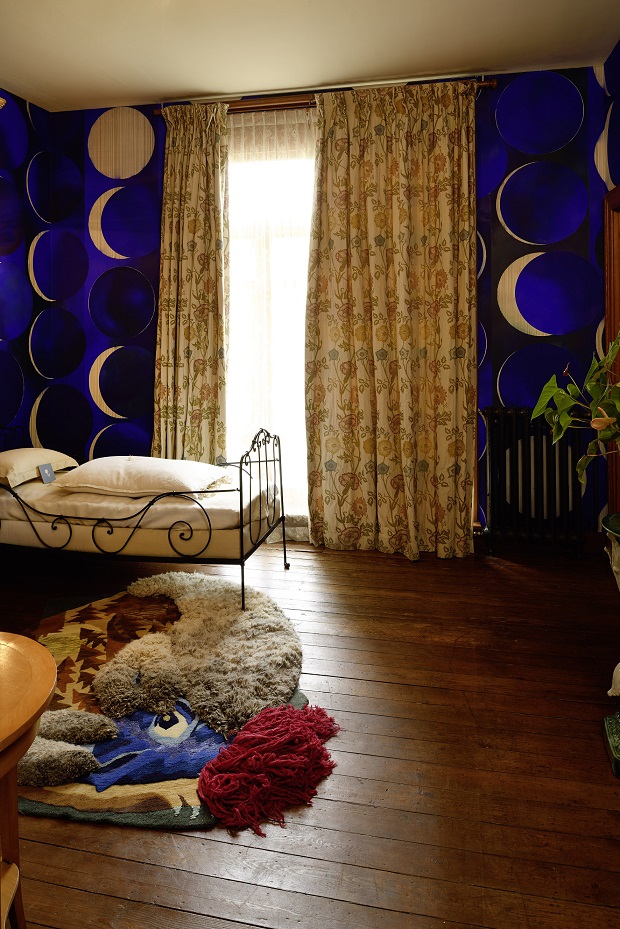 Simone’s bedroom: Christoph Hefti
Simone’s bedroom: Christoph Hefti
The Swiss textile artist and designer enters the imaginary world of childhood with his audacious moon design (pictured above). Large circles have been cut out of the vertical bands of papers and then pasted in various positions to create striking crescents. The graphic result is equally daring in its ultramarine blue, black and cream palette; a departure from the usual Art Nouveau preoccupation with colours that reflect nature. The addition of a rug brings a softer, textural element that introduces animals into this fanciful and visionary setting.
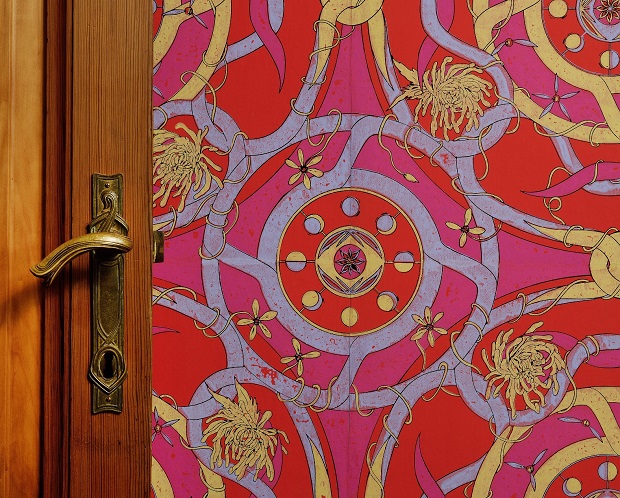 Simone’s boudoir: Nicolas Stolarczyk
Simone’s boudoir: Nicolas Stolarczyk
The French textile artist and plant lover was drawn to the small room adjoining the bedroom for its adjacent luxurious winter garden that fills the interior with light. The foliage served as an inspiration for his surprising and intricate design based around circles and natural elements such as Japanese chrysanthemums and insects (pictured main image and above). Stolarczyk, a recent graduate of Brussels’ visual arts school La Cambre, was attracted to warm colours with hothouse pink and reds dominating the psychedelic creation. A contrasting golden beige hue recalls the woodwork in the room and later period furniture.
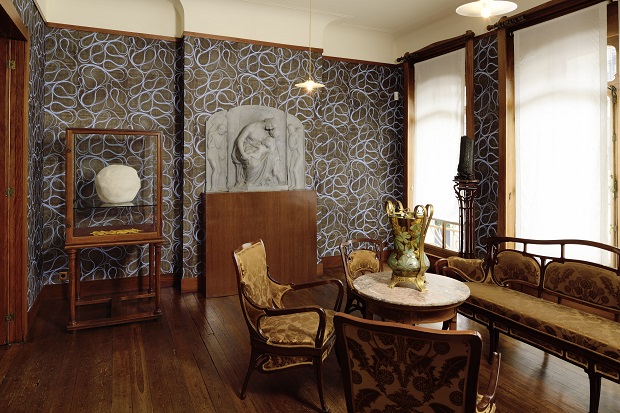
The smoking room: Duo Chevalier-Masson
The starting point for the Belgian creative textile design duo was an uncompleted work found in Horta’s studio; a stamp fashioned out of rope with sinuous lines familiar in Art Nouveau designs. Originally tested with tagliatelle pasta, the pair’s interpretation (pictured above) consists of a double set of lacings that travel around the room in seemingly abstract form. But the smoke-like lines connect with not only with the immediate surroundings, including the central curlicued staircase, but also the original flow of the home and studio, which had separate areas for the staff and the family. The dual bright blue and brown colour scheme was the result of numerous tests in the wallpaper factory; the textured walnut tint background honouring the handicraft of the movement’s artisans and the importance they attached to recreating imperfections, just like in nature.
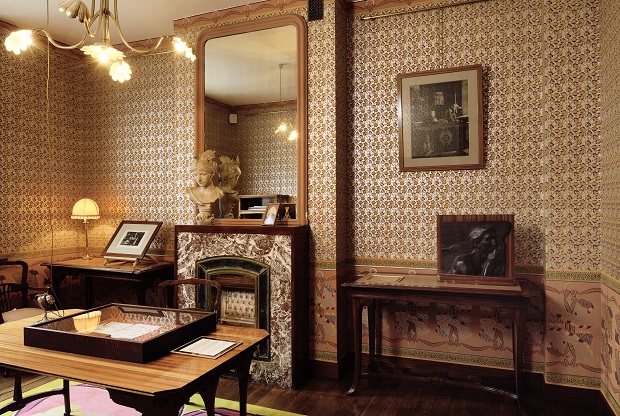
The study: Pierre Marie
The French ornamental artist wanted to take possession of Horta’s study without re-appropriating it, respecting the original sprit of the style by creating a design that at first glance appears more traditional. On closer inspection, the predominant motif is one of cardamom spice and is replicated in three variations with a ribbon design dominating the lower section, separated by a close-up frieze that contributes to the overall contemporary feel. The familiar Art Nouveau colours of dusty pink and moss green are offset by a modern silvery metallic background that reflects the light and creates the optical effect of enlarging the room – literally pushing back the walls as the title of the museum project proclaims. A hand-knotted carpet made in Nepal replicates the paper’s colour scheme and further injects a modern touch.
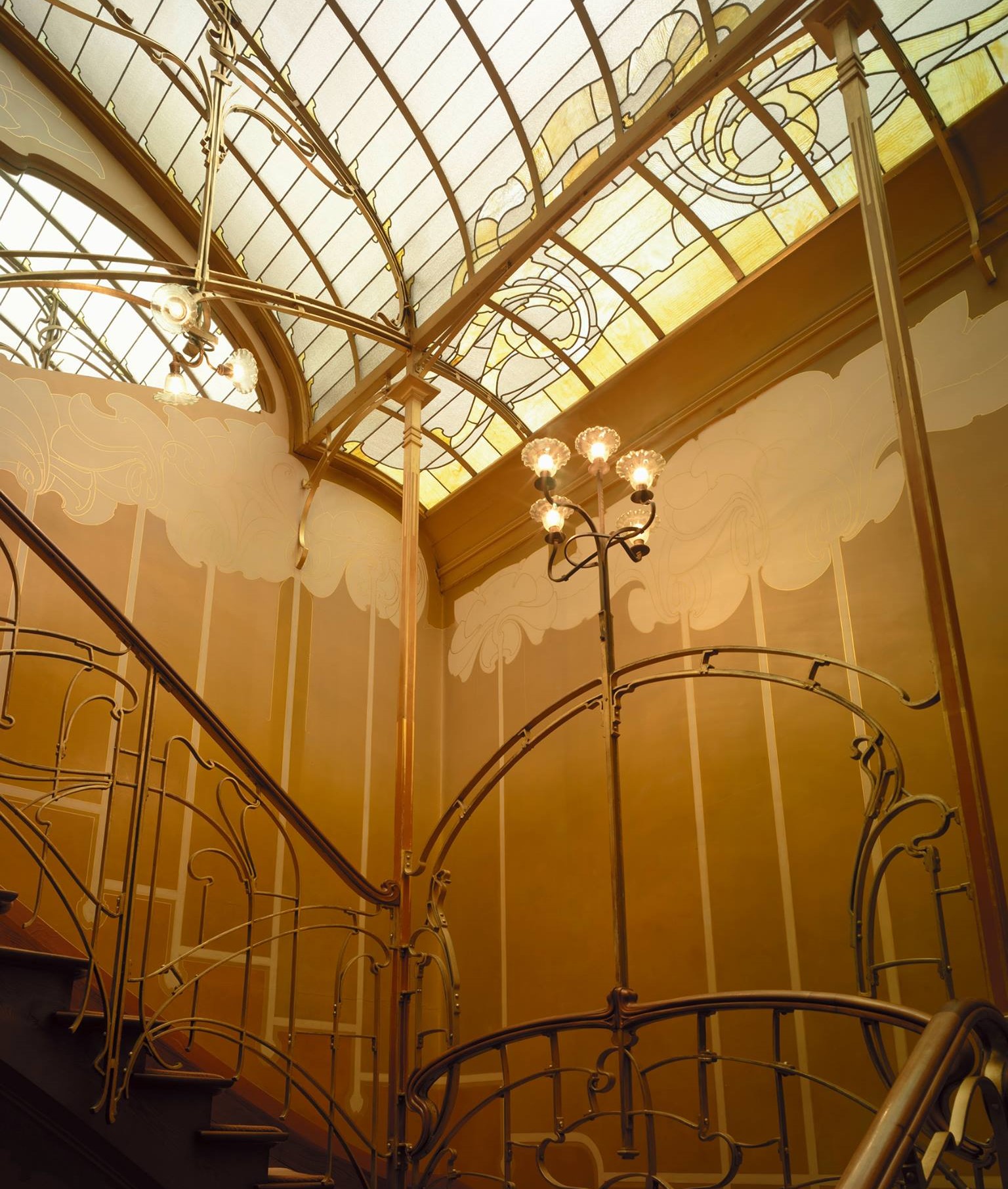 Horta: Founder of Art Nouveau movement
Horta: Founder of Art Nouveau movement
One of the earliest initiators of Art Nouveau, Victor Horta pioneered a stylistic revolution that influenced architecture, art and design around the world. The Belgian architect and decorator built his own home and then adjoining studio in Rue Americaine between 1898 and 1901. It epitomises the essence of his style philosophy with an open plan design, clever diffusion of light and a fusion of curved lines, such as the central intricate staircase (pictured above), with the overall structure of the building.
Eventually sold as two separate houses, in 1961 the property was acquired by the municipality and reunited as a museum. The museum was added to the Unesco World Heritage List in 2000. More recent conservation work returned the buildings to their former state and were extended following the purchase of a neighbouring house designed by architect Jules Brunfaut.
Photos: Musée Horta (c) Paul Louis












